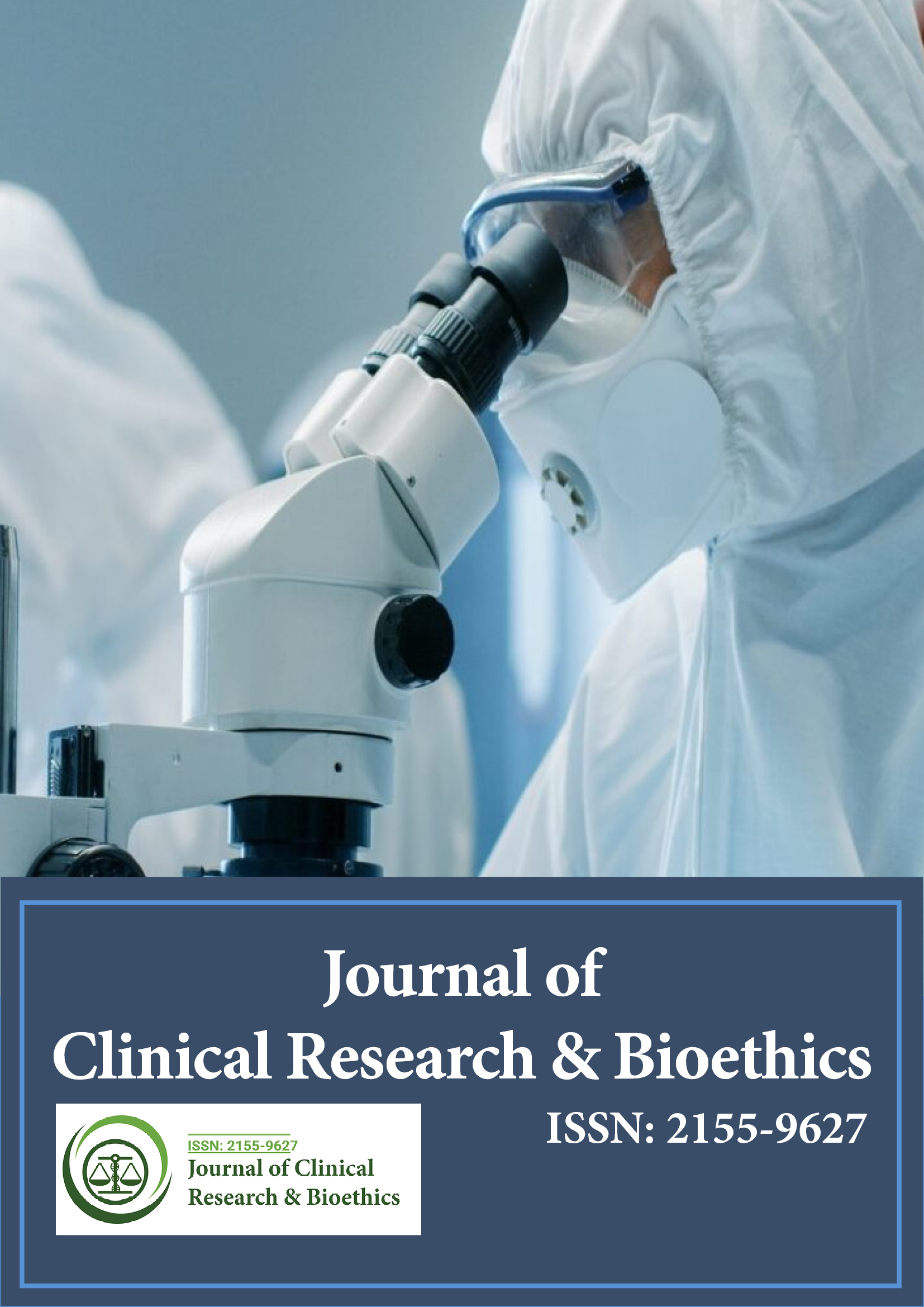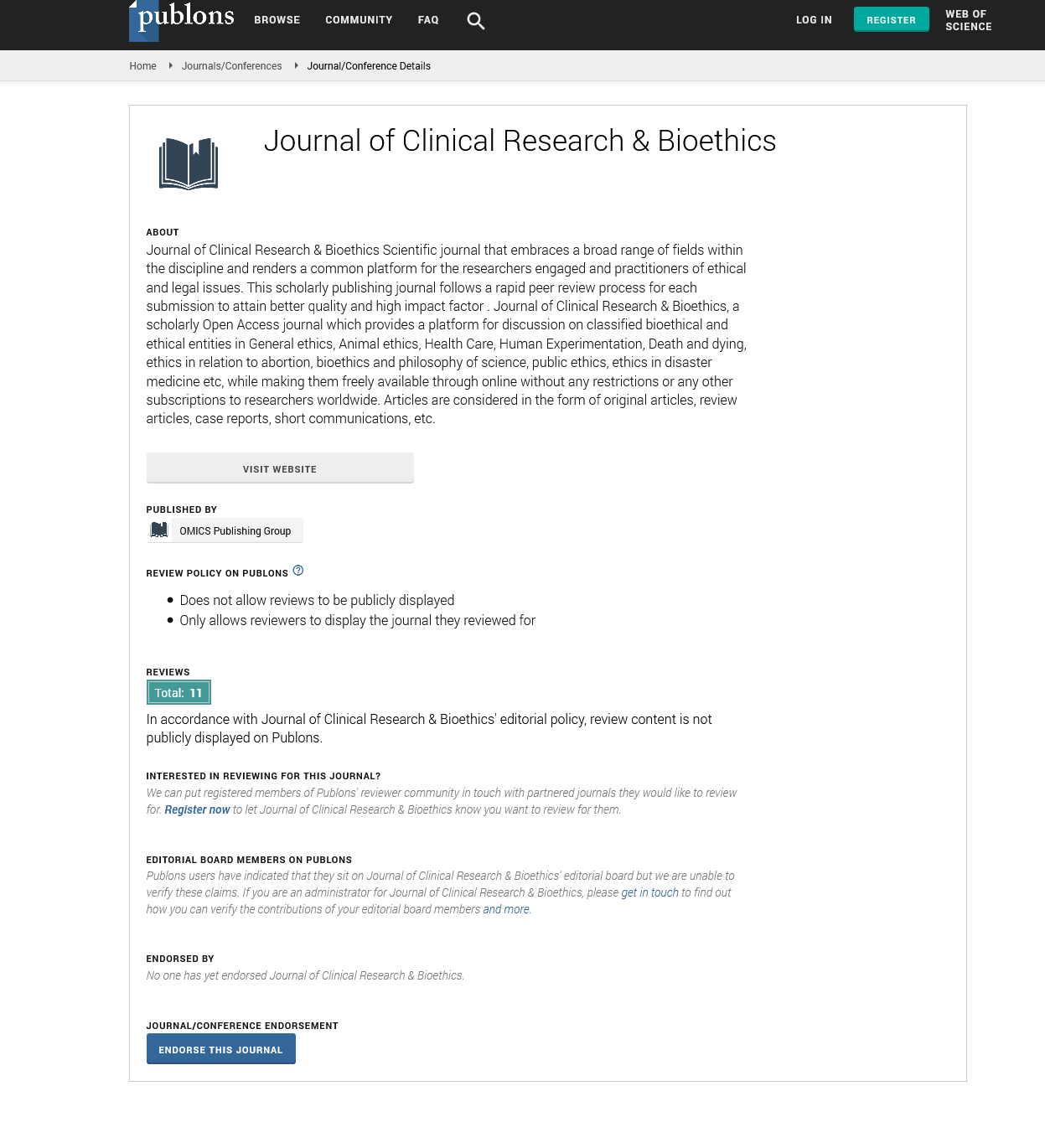Indexed In
- Open J Gate
- Genamics JournalSeek
- JournalTOCs
- RefSeek
- Hamdard University
- EBSCO A-Z
- OCLC- WorldCat
- Publons
- Geneva Foundation for Medical Education and Research
- Google Scholar
Useful Links
Share This Page
Journal Flyer

Open Access Journals
- Agri and Aquaculture
- Biochemistry
- Bioinformatics & Systems Biology
- Business & Management
- Chemistry
- Clinical Sciences
- Engineering
- Food & Nutrition
- General Science
- Genetics & Molecular Biology
- Immunology & Microbiology
- Medical Sciences
- Neuroscience & Psychology
- Nursing & Health Care
- Pharmaceutical Sciences
Commentary Article - (2024) Volume 0, Issue 0
Endoscopic Innovations in the Treatment of Biliary Obstruction
Sarah Moralis*Received: 24-Sep-2024, Manuscript No. JCRB-24-27705; Editor assigned: 26-Sep-2024, Pre QC No. JCRB-24-27705 (PQ); Reviewed: 10-Oct-2024, QC No. JCRB-24-27705; Revised: 16-Oct-2024, Manuscript No. JCRB-24-27705 (R); Published: 24-Oct-2024, DOI: 10.35248/2155-9627.24.S22.003
Description
Biliary obstruction occurs when the normal flow of bile from the liver to the small intestine is blocked, leading to symptoms such as jaundice, pruritus, abdominal pain and potentially lifethreatening complications like cholangitis or liver failure. Common causes include gallstones, tumors, strictures and benign bile duct injury. Endoscopic techniques have revolutionized the diagnosis and treatment of biliary obstruction, providing minimally invasive alternatives to traditional surgical emerged as an effective alternative to ERCP, especially in cases where ERCP is unsuccessful or contraindicated.
EUS-Guided Biliary Drainage (EUS-BD) techniques, such as Choledochoduodenostomy (CDS) and Hepaticogastrostomy (HGS), provide access to the biliary system by creating a fistula between the bile ducts and the gastrointestinal lumen. These methods are particularly useful in patients with altered anatomy, such as those who have undergone gastric bypass or Whipple surgery. Combining EUS with ERCP in a single session, often referred to as the "rendezvous technique," has become a valuable approach in complex cases. This hybrid procedure allows for enhanced access and better therapeutic outcomes in patients with difficult bile duct anatomy or severe obstructions. Recent developments in EUS include the use of Lumen-Apposing Metal Stents (LAMS) for creating anastomoses between the bile duct and the gastrointestinal tract. LAMS offer excellent drainage efficacy and have been associated with fewer complications compared to traditional stents. Stenting plays an essential role in the treatment of biliary obstruction and ongoing innovations in stent technology have led to improved patient outcomes.
Recent innovations in Endoscopic Retrograde Cholangiopancreatography (ERCP), Endoscopic Ultrasound (EUS)-guided interventions and novel stent technologies have significantly improved patient outcomes. ERCP has long been used as the diagnostic method of endoscopic management for biliary obstruction. Traditionally used for both diagnostic and therapeutic purposes, recent innovations have enhanced its therapeutic efficacy and safety profile. The development of high resolution digital cholangioscopes allows direct visualization of the bile ducts during ERCP. This innovation facilitates accurate diagnosis and targeted treatment of bile duct stones, strictures and tumors. Digital cholangioscopy also enables direct biopsies, improving the detection of malignancies. For the management of large or impacted bile duct stones, new lithotripsy methods, such as Electrohydraulic Lithotripsy (EHL) and laser lithotripsy, have improved stone fragmentation and removal success rates. These techniques are particularly beneficial in patients who are poor candidates for surgery. Advances in stent design have transformed the treatment of biliary obstruction. Fully Covered Self-Expanding Metal Stents (FCSEMS) have reduced the risk of tumor ingrowth and migration helps in the management of both benign and malignant strictures.
Endoscopic Ultrasound (EUS) has expanded the therapeutic capabilities of endoscopy by allowing precise access to the bile ducts through the gastrointestinal wall. EUS-guided biliary drainage was designed to release chemotherapeutic agents or anti-inflammatory drugs, drug-eluting stents aim to reduce tumor growth and prolong stent patency in malignant biliary obstruction. Early clinical trials have shown promising results in preventing restenosis. Antibiotic-Coated Stents used to reduce the risk of infection-related complications, stents coated with antibiotics or antimicrobial agents are under development. These stents may help lower the incidence of cholangitis in patients with biliary obstruction. Shape-Memory Alloy Stents made from materials like nitinol, these stents are designed to adapt to the bile duct's shape and size, providing better conformability and reducing the risk of migration or occlusion.
Despite these advances, challenges remain in the endoscopic management of biliary obstruction. Complications such as perforation, bleeding and stent-related infections continue to pose risks. However, ongoing research into robotics, Artificial Intelligence (AI) and real-time imaging is expected to further increase the precision and safety of endoscopic interventions. AIpowered systems that assist in navigation and lesion identification may soon play an essential role in improving the accuracy of these procedures.
Citation: Moralis S (2024). Endoscopic Innovations in the Treatment of Biliary Obstruction. J Clin Res Bioeth. S22:003.
Copyright: © 2024 Moralis S. This is an open-access article distributed under the terms of the Creative Commons Attribution License, which permits unrestricted use, distribution, and reproduction in any medium, provided the original author and source are credited.

